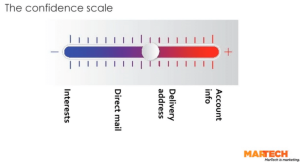— July 27, 2019

These days, technology is at the forefront of nearly all human activities—changing the way things are done whether you’re a student, a teacher, a business owner, or an employee. And one area that has been greatly shaped by technology is hiring.
Professionals in the recruitment industry can attest that there’s a huge difference between hiring strategies then and now. “The workplace culture is shifting, and recruitment trends are driven by technology and diversity,” says Ron Cullimore, Head of Client Services at Manila Recruitment.
Consequently, this means that jobseekers should likewise familiarize themselves with new recruitment processes, so they could find the best opportunities that will help them advance their career.
This article identifies innovations in recruiting practices that jobseekers should keep track of:
Recruitment via social
Social networks used to be a venue for people to connect and interact with one another, but has since changed as individuals and business organizations started using social channels for more critical activities like sharing newsworthy information, promoting advocacies, and advertising job openings.
Having your social media presence can give a boost to your chances of finding employment since recruiters are using these platforms to look for potential employees that they can hire.
To make the most out of social media, make sure to optimize your profiles on LinkedIn, Facebook, or Twitter such as by using a professional-looking photo, as this may help companies consider signing you on for a job interview.
Employee referrals
When it comes to hiring, HR professionals also rely on referrals made by their employees. This is a growing trend that helps recruiters connect with candidates who are likely to have the same set of skills with their employees.
According to Jobvite, as much as 64 percent of companies have an employee referral program in place, which provides incentives to employees when the candidates they referred get hired successfully by the organization.
To help you make the most out of this popular hiring strategy, you should consider making a proactive approach to connect or reconnect with your colleagues. They can help vouch for your competencies and character to your target employer.
Recruiters going mobile
Most of the recruitment process is now happening on mobile devices. With approximately 14 percent of job seekers filling out an application on their mobile device as reported by the Pew Research Center, employers are finding it necessary to bring mobile application experience straight into the hands of potential employees.
Applicants can now access companies’ career sites, take assessments, and upload documents—all from the nifty buttons of their smartphones.
The upward trend in mobile recruiting technology should give you good reasons to hold on to your smartphones. You can use them to search for job openings, register as a job seeker, get job alerts, communicate with employers, and initiate the application process.
The VR Experience
Virtual reality technologies are no longer confined to gaming, film, or entertainment alone—having crossed over the recruitment space as well. VR equipment and tools are now being used in HR processes such as interviews, office tours, practical assessments, trainings, meetings, and collaborative projects. With the right strategy, VR can help bridge the time and space gap between the recruiter and recruit to help facilitate the application process.
Job seekers like you can benefit from a VR hiring technologies in several ways. There are virtual training apps that can help you practice in a Q&A session with a virtual interviewer.
You can also leverage how companies use VR to take job candidates on office tours. By seeing how employees spend their days working in the company, you can determine how you’re going to fit in the organization.
Recruiters’ focus on resumes
If you feel that your resume is just a file or document that you have to fill with bits and pieces of information about yourself, think again.
Recruiters and employers are looking at it as a collection of your personal and professional data to assess your fit for the job and the company. It makes a lot of sense, therefore, to craft your resume based on specific standards among today’s hiring managers.
For one, you could state your skills on your resume using keywords that are applicable to your industry. If you’re targeting a customer service role, for example, you could use such keywords as “customer care” or “customer experience” to attract potential employers who are on a search for candidates with relevant competencies and credentials in this department.
Similarly, there are also red flags that you would do well to avoid putting on your resume. You can find out more about the dos and don’ts in resume writing on Manila Recruitment’s infographic titled ”16 Important Things Recruiters Should Look for in a Resume” here.
Technology is evolving more quickly than ever, and HR teams are bound to upgrade their techniques and processes to stay on top of the competition. As the job seeker, you should likewise step up your efforts in your job search. By being more mindful and responsive to current recruitment trends, you might just land the dream job you’ve been aiming for.
Business & Finance Articles on Business 2 Community
(114)









